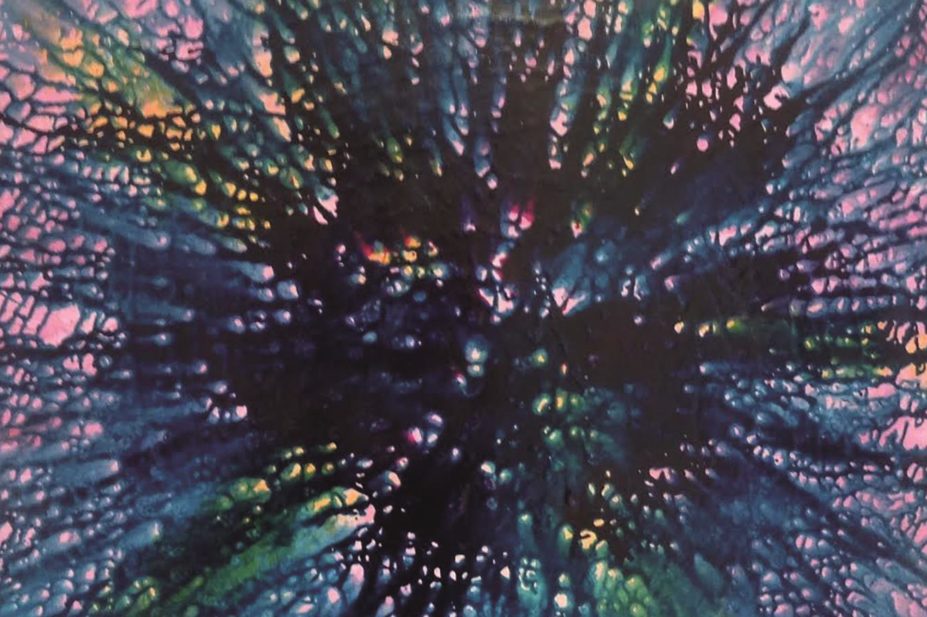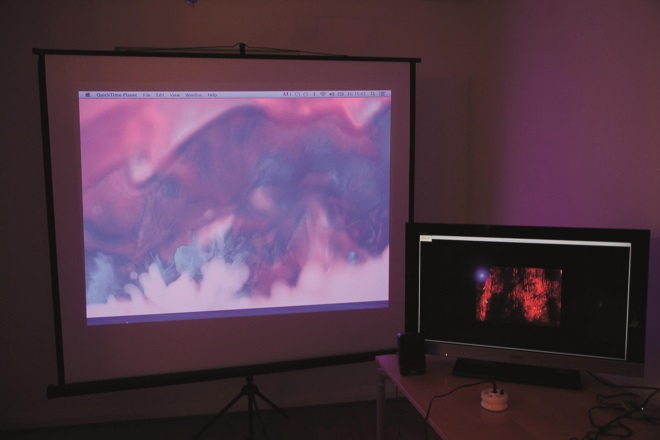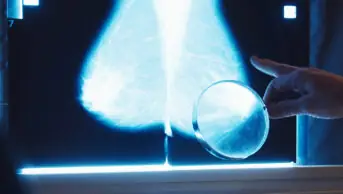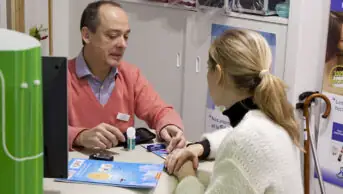
Over 40 pieces of work with a medical science theme are on display in an exhibition split between a small art gallery near St Thomas’ Hospital and inside the busy ground floor corridor of Guy’s Hospital, London. (The exhibition is supported by Guy’s and St Thomas’ Charity.) “Catharsis: a symbiosis of science and art” contains a mix of drawing, photography, painting and sculpture, and an interactive installation. The artists have different backgrounds, but all express an aspect of science through their art.
British artist Melissa Budasz has an interest in the placebo effect and homoeopathy. In one of her pieces (greyscale mixed media on canvas), she illustrates the placebo effect, the power of the mind. In another, she illustrates the release of dopamine (“dopamine magic”). This particular piece has a marble-like effect and looks like it is illustrating the release of neurotransmitters (ie, dopamine).
A number of artists portray medical science in their art because they have medical conditions that inspire them. Jason Clarke, who has bipolar disorder, explained that he draws to clear his head. “Art helps me to manage my illness, it is an absolute necessity,” he added. Once my head is empty, the piece is complete,” he said. Clarke’s work, all done in black and white using A2 paper and gel pens, is an assault on the senses. The drawings are cartoon-like, lively and busy — so busy that you will probably need to look at each one slowly and move from one end of it to another. You may pick up on something different if you viewed the piece again another time.
British artist Gill Hickman said she likes to paint healthy cells. She uses mixed media acrylic on canvas on gold leaf in white or aqua blue-like colour to depict these cells. Hickman said that in the late 1980s she was diagnosed with a life-threatening illness and thought she would not survive. Throughout her illness (and recovery) she began to create her works of cells. Hickman uses gold leaf to illustrate the mitochondria of the cell, drawing you into her piece.
South American artist Renee Rilexie has synaesthesia, a neurological condition in which stimulation of one sensory or cognitive pathway leads to automatic, involuntary experiences in a second sensory or cognitive pathway. Rilexie explained that she sees different colours and tones when she hears music. Like Clarke, Rilexie produces paintings, some brilliantly coloured with beautiful patterns, to help her cope with her condition. “If I start seeing the colours I have to pick up the paintbrush and start painting,” she said, “otherwise I will get headaches.”
There are sculptures on display at the exhibition as well. British sculptor Tim Hollins’s two sculptures are based on conception. “Lifedance”, a bronze sculpture, depicts two sperm cells competing to fertilise one egg, while “Life before life”, a wooden sculpture, shows a sperm cell swimming towards an egg, which actually looks like the head of a needle. There is also a stained glass piece called “My DNA” by Stanislav Geissler, from the Czech Republic, which resemblance a cross between a vase and DNA strands.

‘Universal heartbeat’ by Beata Maria Rzepecka and Fabrizio Smeraldi: there are a number of stop-motion animations of a heartbeat, created by sequencing through a series of frames hand-painted on glass. These animations synchronise with the visitor’s own heartbeat.
In a separate darkened room in the gallery, there is the interactive installation “The universal heartbeat”, created by the exhibition’s curator Beata Maria Rzepecka and Fabrizio Smeraldi, a physicist at Queen Mary University, London. Visitors can listen to their own heartbeats. There are a number of stop-motion animations of a heartbeat, created by sequencing through a series of frames hand-painted on glass. These animations synchronise with the visitor’s heartbeat. You might have to queue for this installation during busy hours.
Over at Guy’s Hospital, there are further works by Hickman, Clarke and Rzepecka. “Magdalena” is a series of photographs of a girl diagnosed with spinal muscular atrophy when she was three years old taken by Rzepecka in Poland. The girl has never been able to walk or stand because her illness causes muscle wasting and impairs her mobility. “I wanted to illustrate Magdalena’s resilience and optimism. She is always full of hope and confidence and she believes things will turn out well,” Rzepecka explained.
Bringing science and art together is not something unique. The Wellcome Collection in Euston, London, has run exhibitions that bring the two disciplines together, but what makes this exhibition interesting is that once you know a bit more about the artists’ reasons for producing these works, you appreciate them on a deeper level.
Catharsis: a symbiosis of science and art. Gabriel Fine Art and Guy’s Hospital (Cottage 2 Old Paradise Yard 20 Carlisle Lane, London SE1 7LG and Great Maze Pond, London SE1 9RT). Until 3 December 2014”


